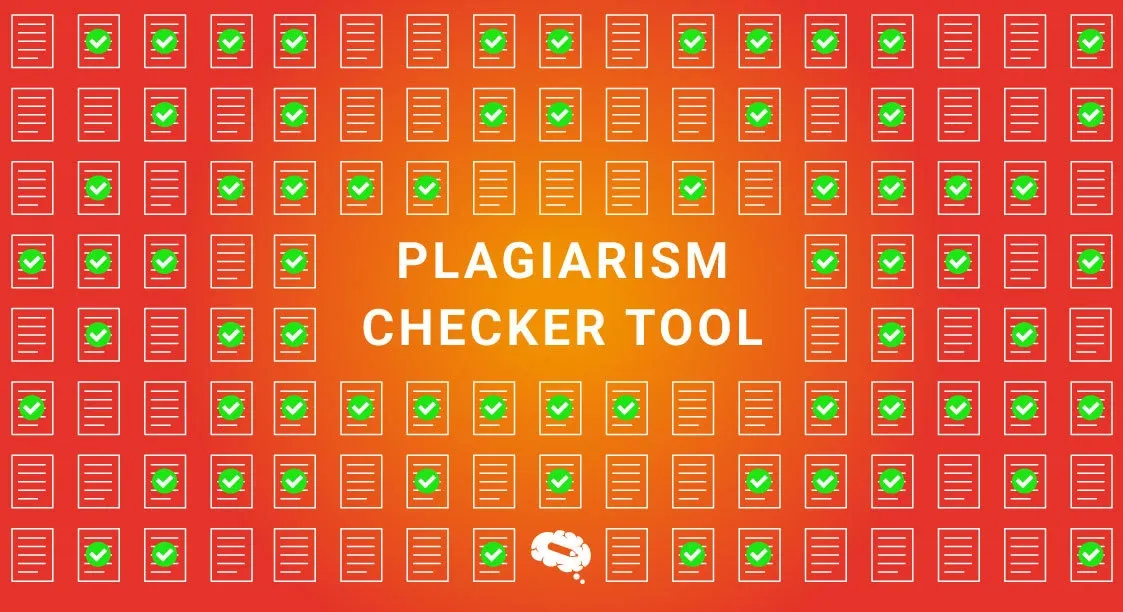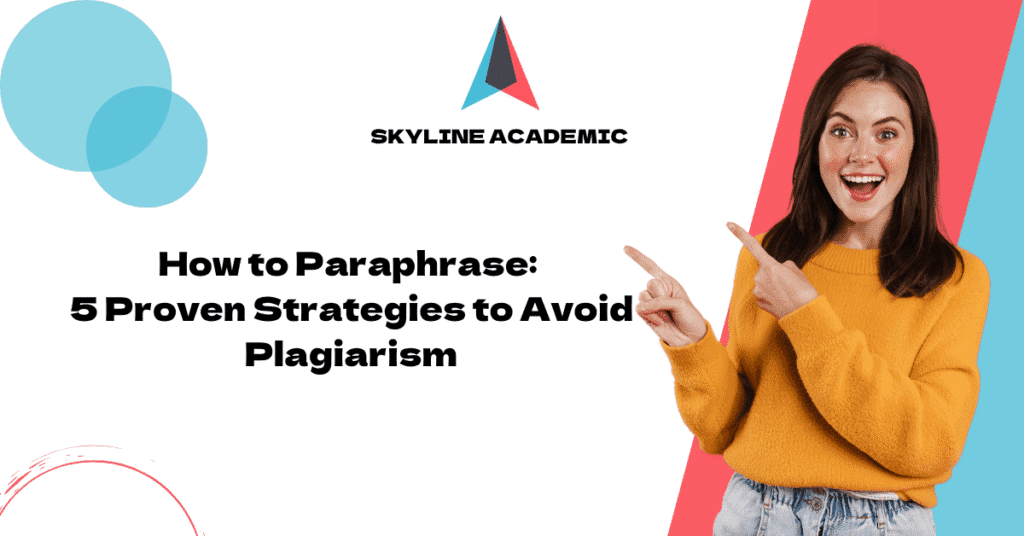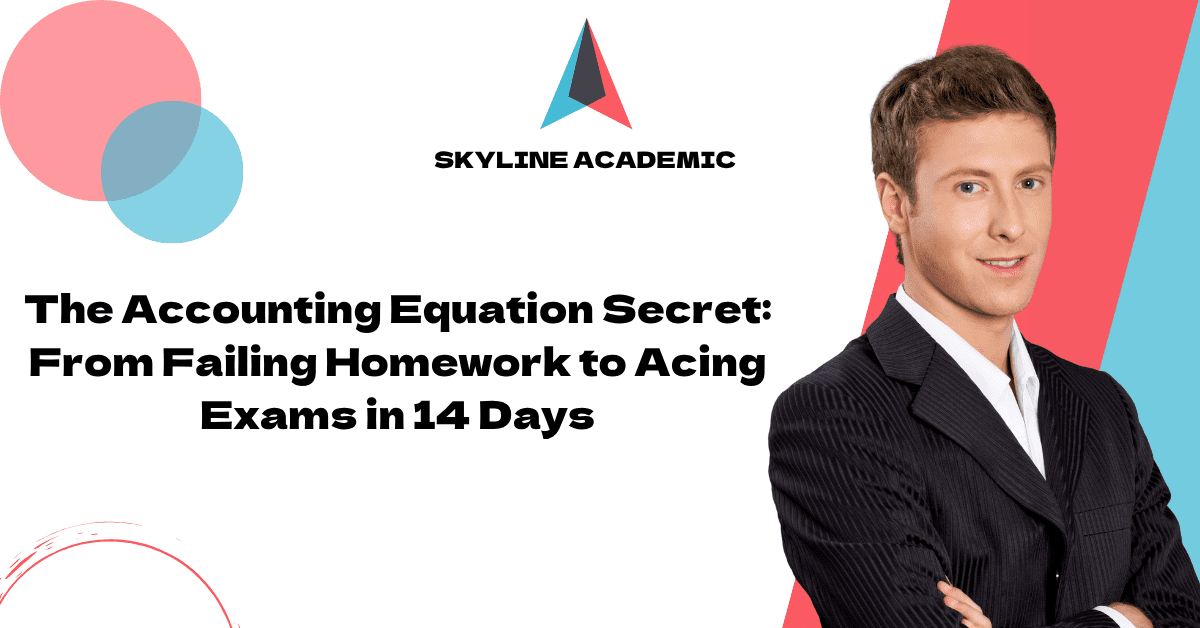How to Paraphrase: 5 Proven Strategies to Avoid Plagiarism
Becoming skilled at paraphrasing helps you avoid accidental academic dishonesty. “Representing someone else’s ideas or work as your own original ideas or work” defines plagiarism – a serious offense with potential risks. Students at the University of Virginia call it an Honor offense. This demonstrates the most common type of academic fraud.
Of course, writers often struggle with the question ‘how to paraphrase?’ correctly. Most problems are systemic when people just swap words without really changing the content. You just need to use quotation marks if you borrow three or more consecutive words from another source. To work well, paraphrasing needs more than replacing words. You must understand the original text and express it in your own way.
This piece shows you a step-by-step method on how to paraphrase correctly and avoid mosaic plagiarism where text chunks get copied with minor changes. You’ll find ways to cite sources properly. Tools that detect online plagiarism can help keep your writing original and properly credited. Skyline Academic’s plagiarism detection can spot potential issues before you submit, so you’ll feel confident about your academic integrity.
Understanding paraphrasing and plagiarism
Writers at all levels often get confused between paraphrasing and plagiarism. A study by Rutgers professor Don McCabe reveals that three in five students admitted they plagiarized content [1]. This makes it vital to understand the difference to protect your academic and professional integrity.
What is paraphrase plagiarism?
Paraphrase plagiarism happens when you restate someone’s ideas in different words and present them as your own original thoughts. This occurs in two main ways:
- You change just a few words while keeping the original structure
- You fail to acknowledge the source through proper citation
Many writers believe that rewording text makes it their own. But paraphrasing only changes the expression—not the ownership of the idea itself. A proper paraphrase needs a complete transformation of the text while preserving the original meaning.
Why paraphrasing is not enough without citation
Perfect paraphrasing still needs citation. This basic rule exists because you’re using someone else’s intellectual property. The Council of Writing Program Administrators defines plagiarism as “deliberately using someone else’s language, ideas, or other original material without acknowledging its source” [2].
Citation does more than just avoid plagiarism. It shows your research skills, builds your credibility, and lets readers explore your sources. Note that proper citation needs both in-text references and a complete bibliography entry based on your required style guide.
When paraphrasing becomes plagiarism
Your paraphrasing turns into plagiarism in several cases:
- The text stays too close to the original wording despite citation
- You change only a few words or just rearrange sentence structure
- You forget to cite the source
- You mix direct phrases from multiple sources (mosaic plagiarism)
A proper paraphrase requires you to really understand the content so you can explain it in your own words. Turabian suggests, “Read the passage, look away, think about it for a moment; then, still looking away, paraphrase it” [2].
Plagiarism has consequences beyond academic penalties. Students risk failing grades, suspension or expulsion and maybe even legal trouble. Copyright laws protect writers’ work, which makes plagiarism both an ethical and legal issue [1].
Online plagiarism detection tools can help you avoid these issues by finding content that needs better paraphrasing or citation. Skyline Academic’s plagiarism detection features can help ensure your writing stays original and properly attributed.
How to paraphrase properly: a practical walkthrough
Becoming skilled at proper paraphrasing needs a step-by-step approach beyond just swapping words with synonyms. These five steps will help you turn source material into authentic writing while keeping academic integrity intact.
Step 1: Read and reflect
Start by reading the original text until you learn its meaning. Understanding the main ideas matters more than remembering exact phrases. Read the text several times, then cover it up to avoid copying unconsciously. Yale’s Poor Center suggests, “To paraphrase is to experience a tension: you must accurately reproduce your source’s ideas, but you must do so in your own language” [3]. Skyline Academic’s reading tools help you mark important concepts while limiting exposure to original wording.
Step 2: Rewrite in your own words
After understanding the material, write it in your own words without looking at the source. Switch up both vocabulary and sentence structure—don’t just replace words with synonyms. These techniques work well:
- Change the grammatical structure (active/passive voice)
- Break up long sentences or combine shorter ones
- Rearrange the order of information
- Use different word forms (nouns to verbs, etc.)
Step 3: Check for similarity
Look at your paraphrase next to the original text to make sure you’ve changed it enough. Watch for phrases that match the source too closely. Skyline Academic’s similarity checker spots potential issues by comparing your text against billions of sources, which helps prevent accidental plagiarism.
Step 4: Add citation
Even the best paraphrasing needs proper citation. APA guidelines state, “When you paraphrase, cite the original work using either the narrative or parenthetical citation format” [4]. Page numbers aren’t always needed for paraphrases, but they help when referencing specific details from long works. Skyline Academic’s citation generator formats citations automatically in APA, MLA, or Chicago style.
Step 5: Review for clarity
Take a final look at your paraphrase to check if it captures the original meaning while standing as your own work. Ask yourself:
- Does it include all important information?
- Have you kept the relationship between ideas?
- Does your writing flow naturally?
- Is the citation format correct?
This complete approach will provide you answers about how to paraphrase that avoids plagiarism issues and blends sources into your work smoothly.
Common mistakes and how to fix them
Writers often make common paraphrasing mistakes despite their best intentions. You need to spot these mistakes first to avoid plagiarism in your academic work.
Changing just a few words
Simple word substitution while keeping everything else the same is plagiarism. This “patchwriting” happens when you swap out a few terms but keep the original meaning intact.
The problem: A thesaurus-based approach to swap words doesn’t show you understand the material and usually creates awkward sentences. This method is easy for plagiarism checkers to spot.
The fix: You should read the passage and put it aside. Then write what you understood without looking at the original text. Skyline Academic’s paraphrasing assistant helps you find text that’s too similar and suggests better alternatives.
Keeping the same sentence structure
You commit plagiarism when you change words but keep the original sentence structure and idea order unchanged.
The problem: Your work isn’t truly original if you follow the same thought pattern or sentence construction.
The fix: You need to completely reorganize the information. Try changing the order of points, merge or split sentences, or switch from passive to active voice. Skyline Academic’s structure analyzer finds patterns that match source materials too closely.
Forgetting to cite the source
Without doubt, failing to cite sources is a serious error – you must cite even perfectly paraphrased content.
The problem: Readers will think all ideas are yours if you don’t cite, which is intellectual theft.
The fix: Your paraphrased material needs in-text citations, whatever changes you make to the wording. Skyline Academic’s citation generator creates proper references right away.
Using unique phrases without quotes
Some authors use distinctive phrases that you can’t paraphrase well.
The problem: You should put distinctive terms or three or more consecutive words from the original in quotation marks.
The fix: Unique terms or phrases borrowed exactly need quotation marks. You should show editorial changes with square brackets [like this] and omissions with an ellipsis (…).
Your paraphrasing should be clear and authentic while respecting intellectual property. Good paraphrasing shows your understanding rather than just repackaging someone else’s words.
Tools to help you paraphrase and avoid plagiarism

Image Source: Mind the Graph
Digital tools have revolutionized academic writing. Writers now have access to tools that help them paraphrase better and avoid plagiarism. These resources will improve your writing process if you use them right.
Paraphrasing tools: pros and cons
AI-powered tools like QuillBot and Wordtune can rewrite text while keeping the original meaning intact. Research comparing eight popular tools showed that QuillBot and Wordtune’s premium versions worked best, scoring 4.0 out of 5 [5].
Pros:
- You’ll save time as you write
- Complex ideas become clearer and easier to read
- Different “modes” suit various writing styles
Cons:
- Some sentences might sound unnatural or have grammar issues
- You still need to understand the material yourself
- Too much dependence can slow down your growth as a writer
How to detect plagiarism online
Plagiarism checkers compare your writing with billions of sources to find matches. Grammarly’s tool, to name just one example, analyzes text against 16 billion web pages and academic papers [6].
Skyline Academic’s plagiarism detection stands out with its detailed similarity reports and revision suggestions. It goes beyond simple checkers by finding both direct quotes and paraphrased content that needs citations.
Citation generators for APA and MLA
Making perfect citations by hand takes too much time. Citation generators make this job easier:
- Scribbr’s Citation Generator uses the same citation software (CSL) as Mendeley and Zotero but with better accuracy [7]
- Grammarly creates citations automatically when you visit popular research sites [8]
- QuillBot works with over 1,000 citation styles including APA, MLA, and Chicago [9]
Skyline Academic’s citation tool creates perfectly formatted references and combines smoothly with its paraphrasing assistant.
Grammar and writing assistants
Complete writing tools do more than paraphrase and cite. They check your grammar, improve your style, and make your writing clearer.
Grammarly’s data shows 94% of students credit their premium service for better grades [8]. Skyline Academic’s grammar tools also spot awkward phrases and give context-specific suggestions for academic writing.
Try Skyline Academic’s writing tools. Our paraphrasing assistant, citation generators, and plagiarism checkers make academic writing more accurate and easier.
Conclusion
Conclusion
Writers committed to academic integrity must master the art of paraphrasing. In this piece, you’ve learned that good paraphrasing needs more than just swapping words—you must understand and completely transform the original text while keeping its core meaning.
The collateral damage of plagiarism goes way beyond the reach and influence of academic penalties and can hurt your reputation and future opportunities. A solid foundation for ethical writing comes from the five-step process—read deeply, rewrite authentically, check similarity, add proper citations, and review for clarity.
You can avoid common paraphrasing mistakes in your work. Changing a few words or keeping the original sentence structure ended up failing both plagiarism checks and academic standards. The tools from Skyline Academic make this complex process easier by spotting problem areas and suggesting improvements before you submit.
Digital tools are a great way to get help, but they can’t replace your grasp of the material. Skyline Academic’s complete suite stands out because it merges similarity detection, citation generation, and paraphrasing improvement in one platform.
Take a look at our related content about Skyline Academic, including advanced paraphrasing tools, citation guides, and plagiarism detection features that help you master proper techniques.
To sum up, good paraphrasing shows you understand source material and adds your point of view to academic discussions. These techniques help you avoid plagiarism and build stronger analytical and writing skills that serve you throughout your academic and professional trip.
FAQs
Q1. How to paraphrase effectively without plagiarizing?
Regarding how to paraphrase effectively, thoroughly read and understand the original text, rewrite it completely in your own words, check for similarity with the original, add proper citations, and review for clarity. Avoid simply changing a few words or keeping the same sentence structure.
Q2. What are some common paraphrasing mistakes to avoid?
Common mistakes include changing only a few words, maintaining the original sentence structure, forgetting to cite sources, and using unique phrases without quotation marks. To avoid these, focus on completely transforming the text while preserving its meaning and always cite your sources.
Q3. Are paraphrasing tools helpful for avoiding plagiarism?
Paraphrasing tools can be helpful, but they have limitations. While they can save time and improve readability, they may produce awkward sentences and cannot replace your own understanding of the material. Use them as aids, but don’t rely on them entirely.
Q4. How do I know if my paraphrasing is too similar to the original text?
Compare your paraphrase with the original text to ensure you’ve truly transformed it. Look for phrases that match the source too closely. Using plagiarism detection tools can help identify problematic passages by analyzing your text against numerous sources.
Q5. Is it necessary to cite sources even after paraphrasing?
Yes, it’s crucial to cite sources even when you’ve paraphrased the content. Proper citation acknowledges the original author’s ideas, demonstrates your research skills, and allows readers to explore your sources. Include both in-text references and complete bibliography entries according to the required style guide.
References
[1] – https://www.johnsflaherty.com/blog/students-face-academic-and-legal-consequences-when-plagiarizing
[2] – https://honor.virginia.edu/understanding-fraud
[3] – https://poorvucenter.yale.edu/ParaphraseStrategies
[4] – https://apastyle.apa.org/style-grammar-guidelines/citations/paraphrasing
[5] – https://www.scribbr.com/language-rules/best-paraphrasing-tool/
[6] – https://www.grammarly.com/plagiarism-checker
[7] – https://www.scribbr.com/citation/generator/
[8] – https://www.grammarly.com/citations
[9] – https://quillbot.com/citation-generator



